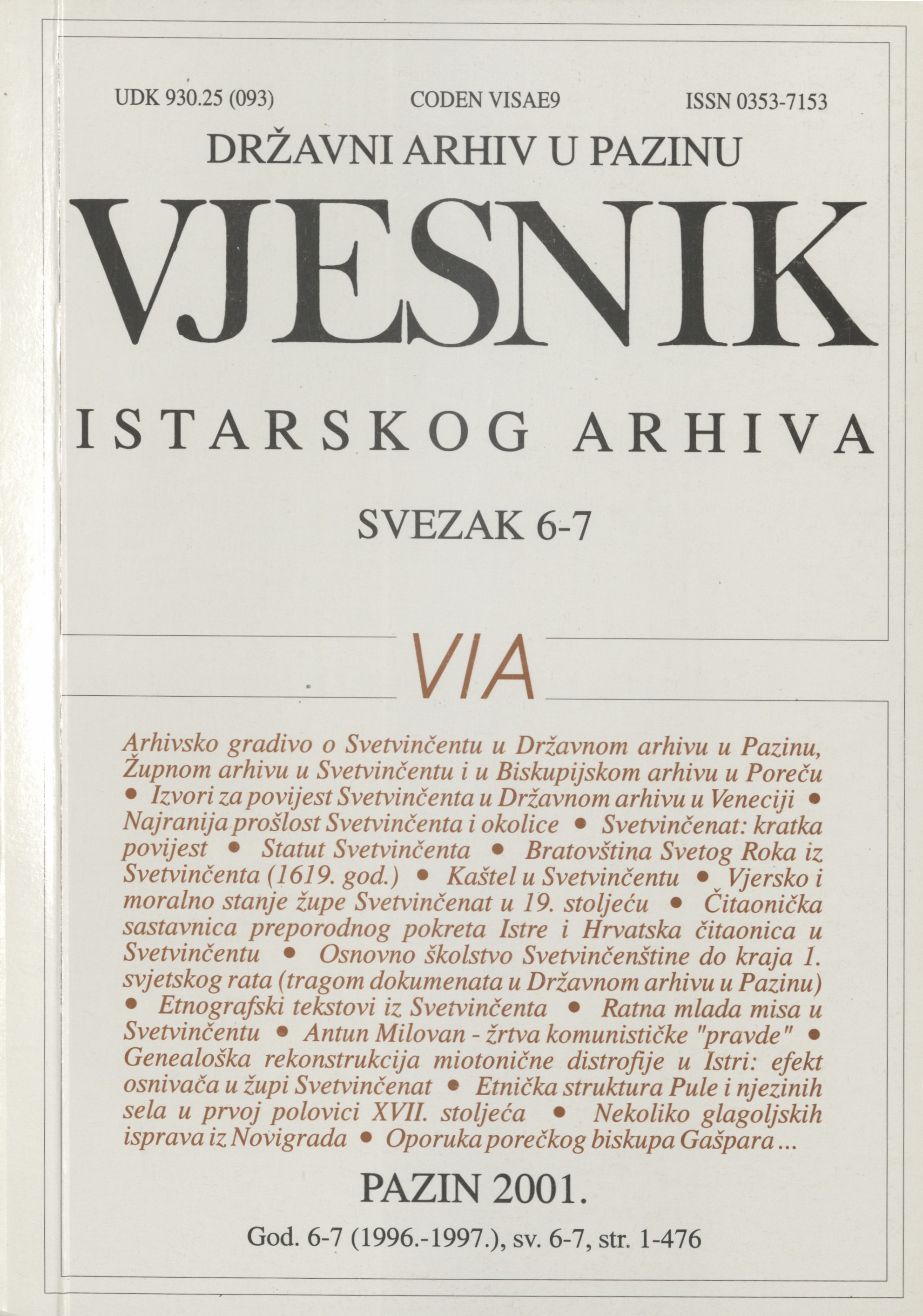The castle in Svetvinčenat
Abstract
In the introduction, the A. gives the essential facts concerning the castle as the biggest and most dominant element in the Svetvinčenat settlement. In the next section, he presents the historical development of the castle from the putative first building in the period of the Sergi Castropola family from Pula, to the last adaptation in 1933. It is a fact that the Morosini family ordered the building of the castle or the adaptation of an existing building in 1485. It was then that the magnificent renaissance building was erected. It had more than one function: defensive (as a castle with towers that can house a number of soldiers), economic (for keeping the yields of the big fief), as a residence for the captain, as a representative building and particularly as a symbol of the might and dignity of the feudal lord. The A. reconstructs the appearance of the castle in that period on the basis of the actual state and of the bibliography. When the Grimani family became the owners of the fief (in the 2nd half of the 16th century), they got an already completely formed castle. It was destroyed in a fire in 1586, and reconstructed a few years later. These interventions are described, and some other minor adaptations are analysed. Under the direction of Anton Gnirs, a partial reconstruction and conservation of the castle started in 1907, within a project by the Austrian government for the protection and reconstruction of cultural monuments. The interior of the main buildings was radically adapted in 1933, for housing the offices of the Commune and other institutions. The castle was burned towards the end of the Second World War, and has been left to decay, so that today it is in ruins. At the end, the A. examines the tipology of the Svetvinčenat castle and compares it to castles in the Kaštelanski zaljev (near Split), in the Dubrovnik area and on the islands, finally to those with similar functions in Istria (Barban, Višnjan). The A. thinks that the time has come for beginning a high-quality reconstruction of the castle (even if partially), in order to save it from complete destruction.
Downloads
Published
Issue
Section
License

This work is licensed under a Creative Commons Attribution-NonCommercial 4.0 International License.

